“I wonder how many windows are there.” I had lost my count somewhere on the second floor.
“953”, my wife declared. I felt she stared counting it from the moment she stepped out of the cab.
“That’s too precise, did you actually count it?” I was intrigued.
“I googled earlier”, she declared and started posing, “you going to click some pictures or shall I ask passer byes?” “Yeah Yeah”, I told and frantically reached for my belt where I had hung my point-and-shoot camera and obliged with my wife’s request of pictures.
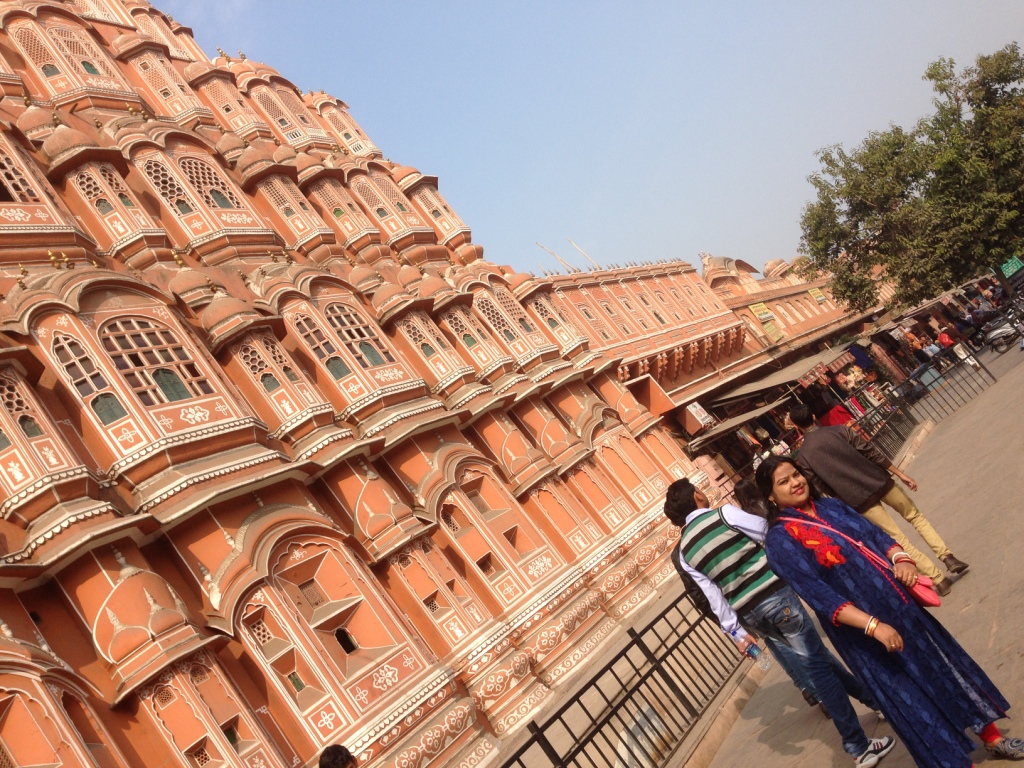
Table of Contents:
1. The Palace of winds.
2. Hawa Mahal – Not a Palace
3. The Architecture
4. The Science of Jharokha
5. The Levels of Hawa Mahal
5.1. Sharad Mandir
5.2. Ratan Mandir
5.3. Vichitra Mandir
5.4. Prakash Mandir
5.5. Hawa Mandir
The Palace of Winds:
It won’t be wrong if I say that Hawa Mahal, meaning the Palace of winds is one of the most iconic monuments of India. It is also perhaps the most recognisable landmark of Jaipur. It sits on the main road in the centre of the city, making it one of the most accessible landmark as well.
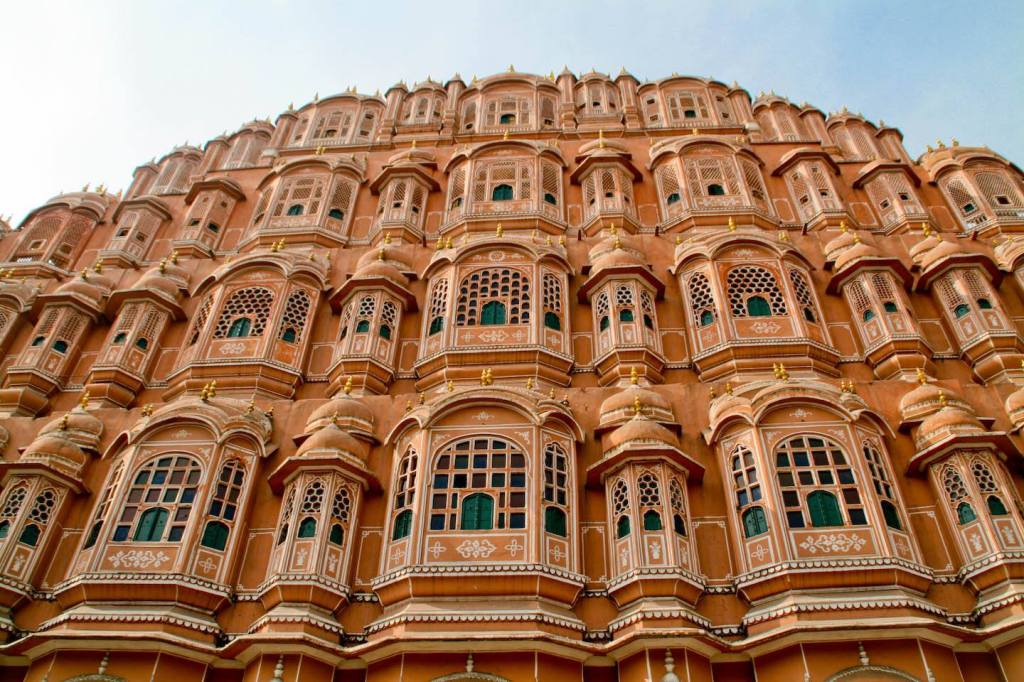
The design of the building showcases an excellent blend of Hindu Rajput architecture with that of the Islamic Mughal architecture. The fluted pillars, floral patterns and domed canopies are an excellent example of the Rajput architecture, where as the arches and stone inlay filigree work are manifestations of the Mughal style. This monument is built with red and pink sandstones, blending it with the city’s pink obsession. Yes, Jaipur is actually pink, not the typical pink but a more rustic looking pink.
The facade of the building is intricately carved with beautiful motifs that also provides an illusion of honeycomb of a beehive. All widows above the 1st floor have latticed windows, chiselled sandstone grill and decorated domes, all of which together create a mesmerising image.
Hawa Mahal – Not a Palace:
Hawa Mahal was never built with the intention of staying. It in fact was built to give the ladies of the royalty an opportunity to enjoy the city’s life and various processions that the city hosts, while still staying out of the sight of the commoners. It’s just an over the top balcony of sorts. This ensured women maintained the Purdah system while also provided them with the much needed independence albeit not directly.
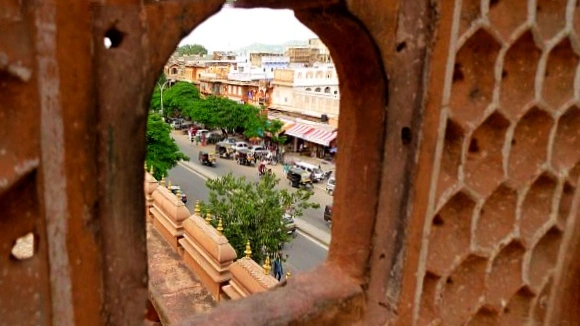
I know people will have polarised opinions about this, but I believe this is more a symbol of respect and love of the king for his women rather than oppression. This building is an example of how far a man would go to give the women in his life some joy while treading carefully as to not upset the societal norms. I am against purdah system, don’t get me wrong, but we must pragmatically look at the intention with respect to the time it was built. Purdah system was much prevalent in those times and going against it was a very bad PR for the kings. So the guy did what he could. Personally I think it should be right up there with the Taj Mahal, you are free to have your own opinion on it.
Hawa Mahal – The Architecture:
Hawa Mahal doesn’t have a visible door in the front, which leads many to believe that you cannot enter it. Well, actually you can enter it, but from another side. The gates of this palace is situated on the backside facing one of the gates of the City Palace of Jaipur.
I learnt from my wife, who had googled Hawa Mahal earlier, that the building doesn’t have a foundation. Instead the designer of this place Lal Chand Ustad, built this with a slight tilt and balancing it like a pyramid.

Maharaja Sawai Pratap Singh commissioned this building in 1799 and Ustad Lal Chand designed this whole palace. It had a direct path to the City Palace where the Royalty resided. The Royal Ladies would board their Palanquins and land on the Hawa Mahal, go to their respective jharokhas and enjoy the life on the streets. This is the reason what the palace doesn’t have an entry on the front side. Nobody was supposed to enter it from the front.
Window (Jharokha) with Science:

“The jharokhas are built in such a manner that air circulates naturally creating Venturi effect.” My wife showcasing her google knowledge.
“What’s a venturi effect?” seriously, what is that? I had no idea.
“Who is the engineer among us?” She said with a hint of sarcasm in her tone.
“I am”, I replied timidly.
“Then I should be asking you this question. All I know is it cooled the place”, she said and started walking ahead.
I had a red face now. Some bells started ringing my head. I had heard that word in some subject during my college, but can’t recall it now. That’s what happens when you mug. I had this urge of googling the word but then dropped this idea as it had no point. My wife clearly has no intention of learning about it, and for me ‘it cooled the place’ kind of summarised it. It is astonishing to see how much science our ancestors knew.
The Various Levels of Hawa Mahal:
The entry to the Hawa Mahal is through an otherwise humble looking gate called Anand Pol. This gate has a direct path connecting to the City Palace of Jaipur. Once we entered through the gate, we were welcomed by another gate called Chandropoli gate, this one had embellishments of gods and goddesses on its arched top.
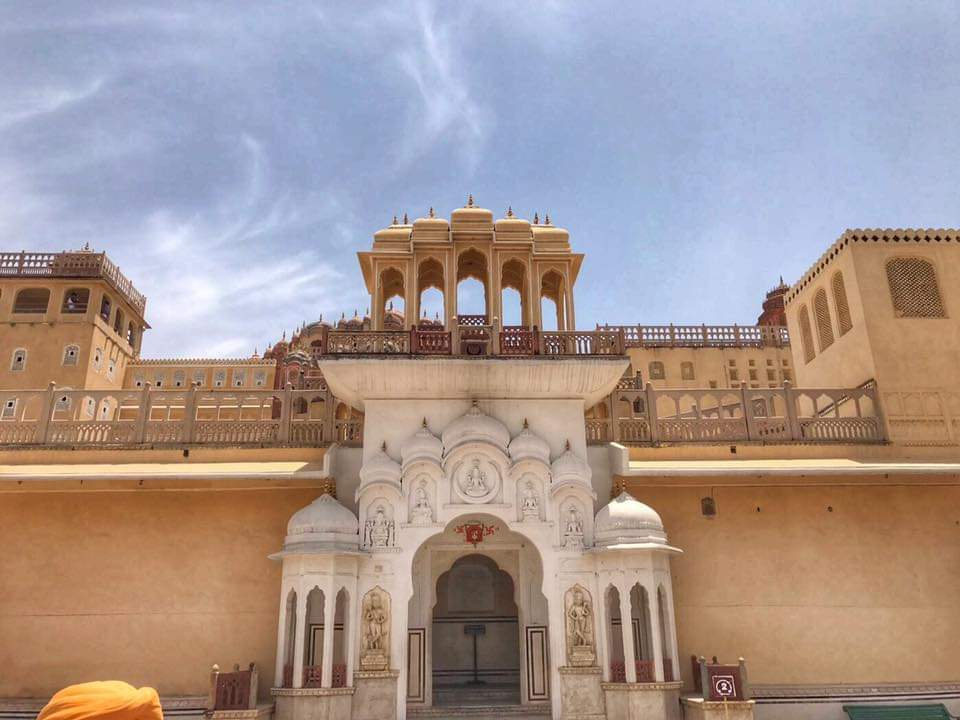
Hawa Mahal has 5 floors and as it happens with all royal monuments, this one also had names for all its floors. The first floor is called Sharad Mandir. The name is derived from the Autumn Season, which brings with itself some big festivities. This floor was used to host those festivities and hence the name. It had a big fountain in the middle of it, but since we were there so early, the fountain was not running and instead served as a resting place for pigeons.
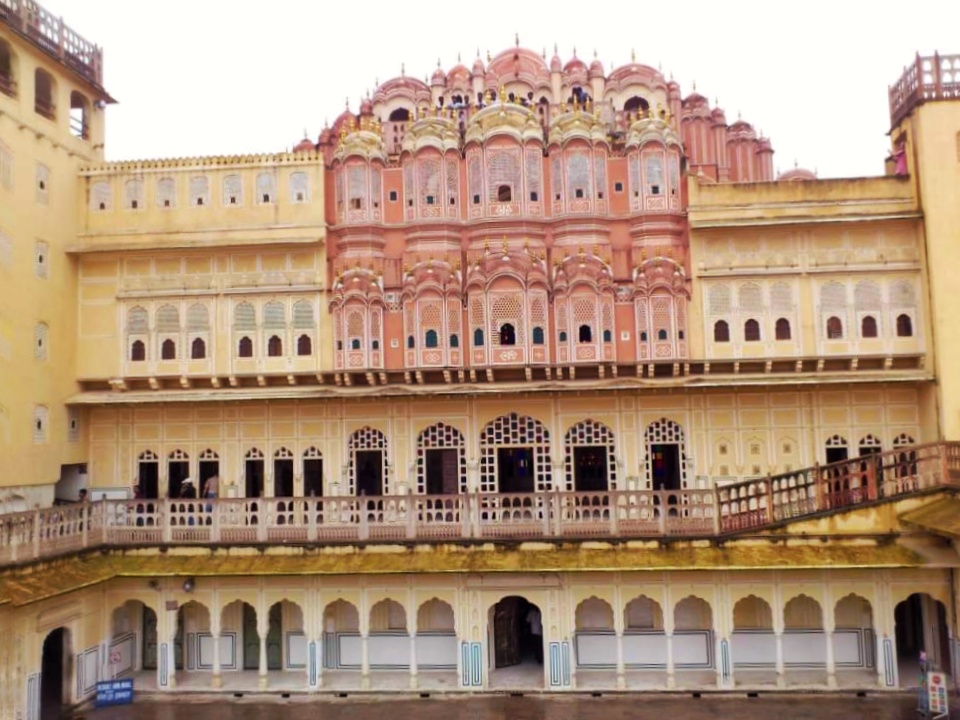
The second level is called Ratan Mandir. Ratan in hindi means gem and true to its name, it was a gem of a place. Stained glass covering door arches and widows gave an enchantingly colourful look to the otherwise plain walls. There is a balcony surrounding the entire second floor facing the inside. Basically the balcony was looking into the courtyard on the floor where the fountain sat.

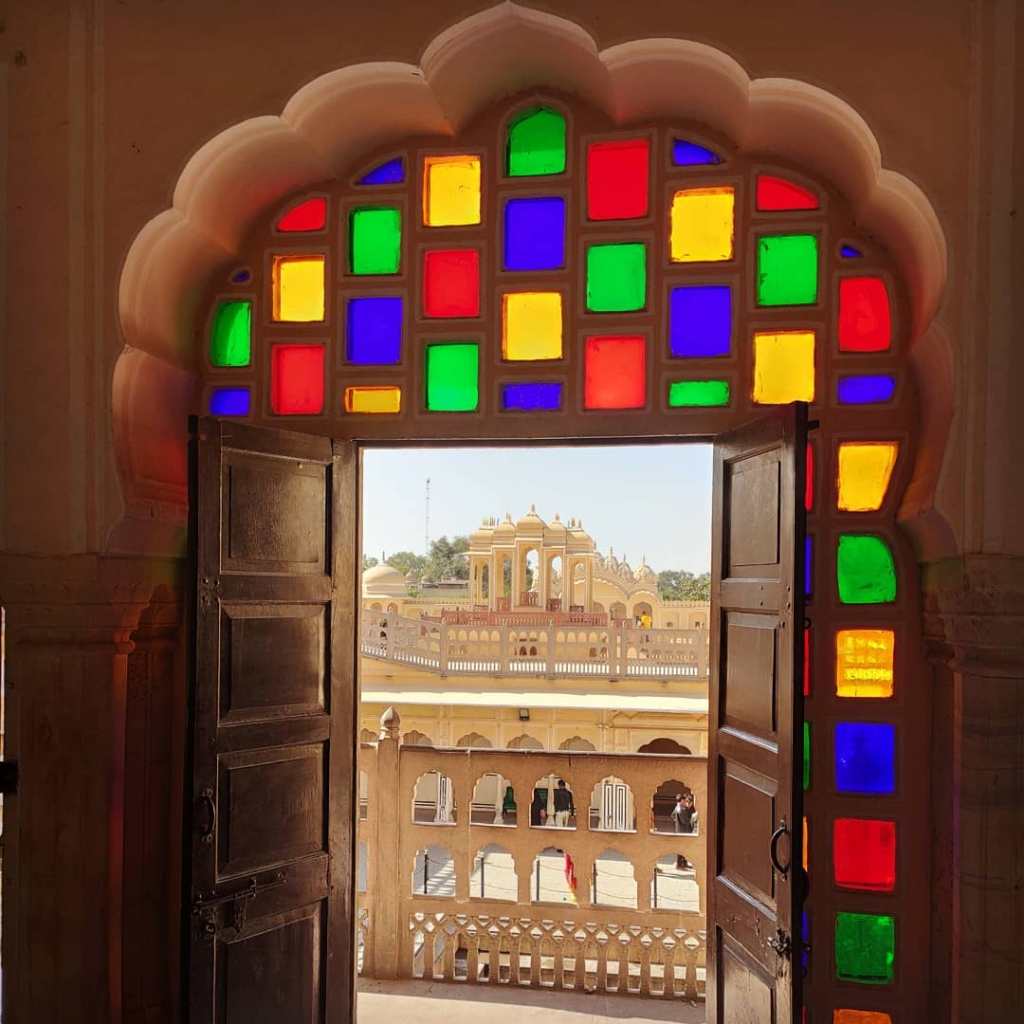
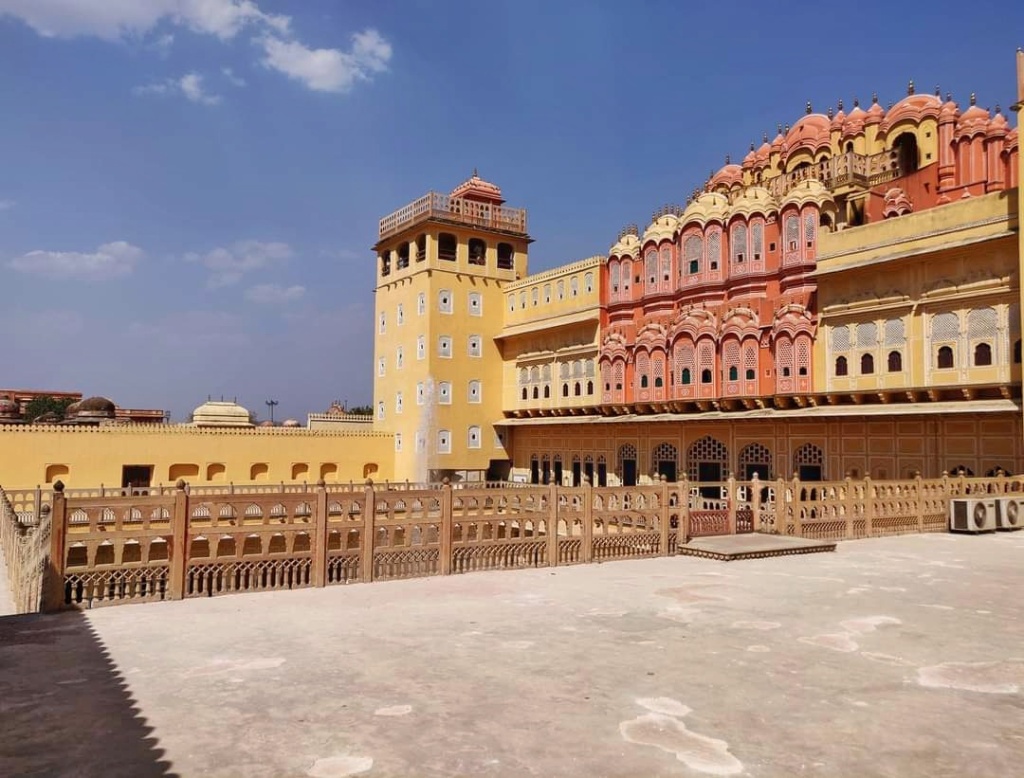
The third floor is called Vichitra Mandir and is the place where the King used to come and spend some time alone away from all the commotions of the royal life and also to offer his prayers to lord Krishna. Not sure why it’s named as weird (that’s the literal translation of Vichitra). We were not allowed to discover the area; it was sealed off for maintenance.

Narrow staircase of the palace 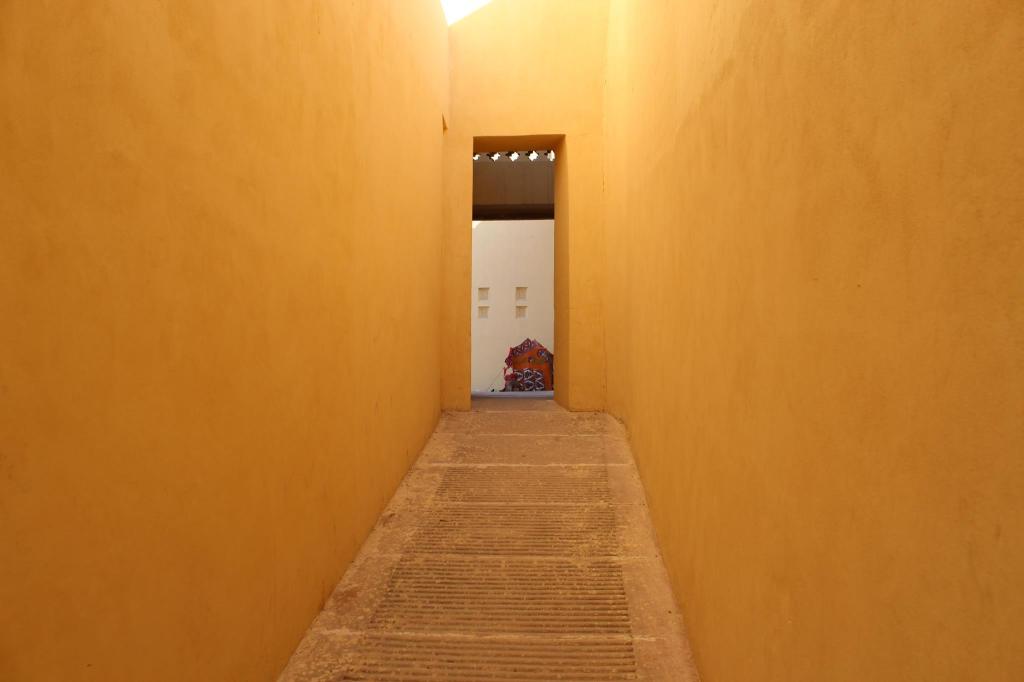
Ramps going up from 4th to 5th floor
Third floor onwards the pathways become narrow and steep, with a combination of steps and ramps. The path was so narrow that claustrophobia started creeping in as we accented to the top. The next two floors had viewing stations that provided for some amazing views of the city. The fourth floor is called Prakash Mandir, probably acknowledging that fact that you have successfully endured the dark narrow pathways to reach the palace of light.
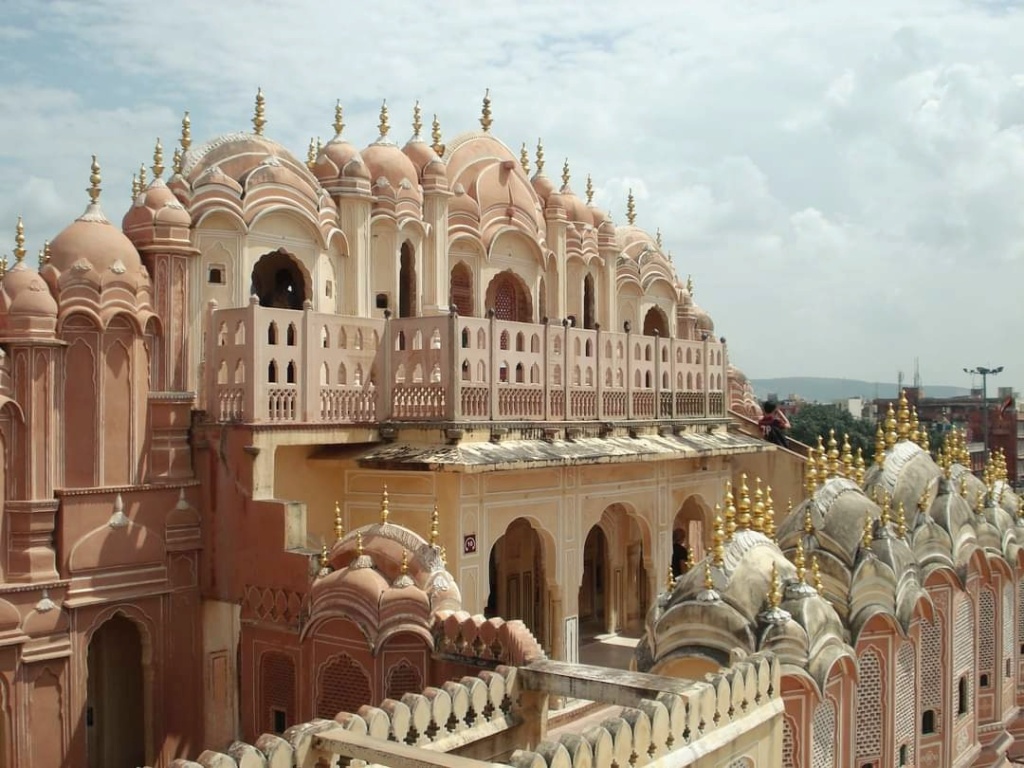
The fifth and final floor is called Hawa Mandir. It is this floor that renders the name to this palace as being on the fifth floor guaranteed the best wind in the city.
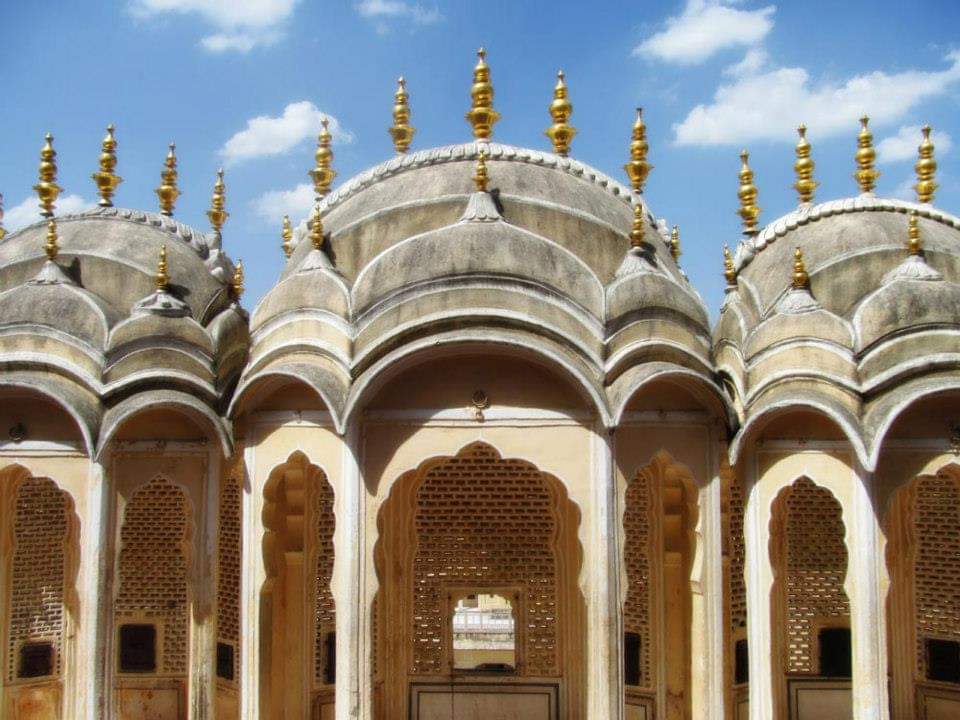
Unfortunately, the day we went to Hawa Mahal was a winter morning and the wind was not very heavy, so we couldn’t experience it ourselves, but I can imagine the same. Looking from the fifth floor I could see glimpses of the City Palace and Nahargarh fort at a distance. We were lucky that it was not a foggy morning.
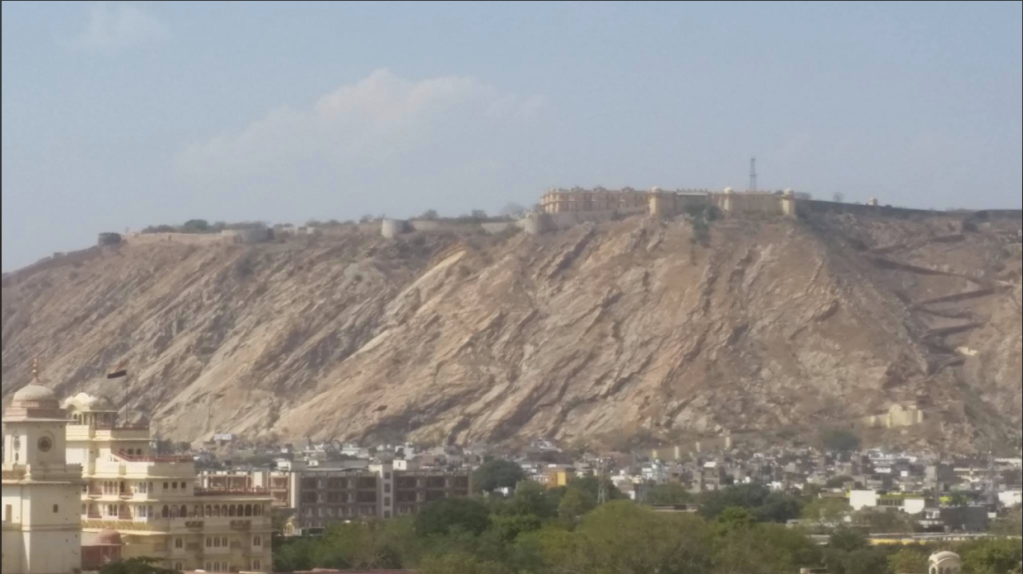
Hawa Mahal truely deserves the recognition of being one of the most photographed building in the world. The intricate designs, the colored windows, the science behind it; everything deserves the applause that is bestowed upon it. Technically it may not be a palace, but for me it is a palace that one simply cannot afford to miss.
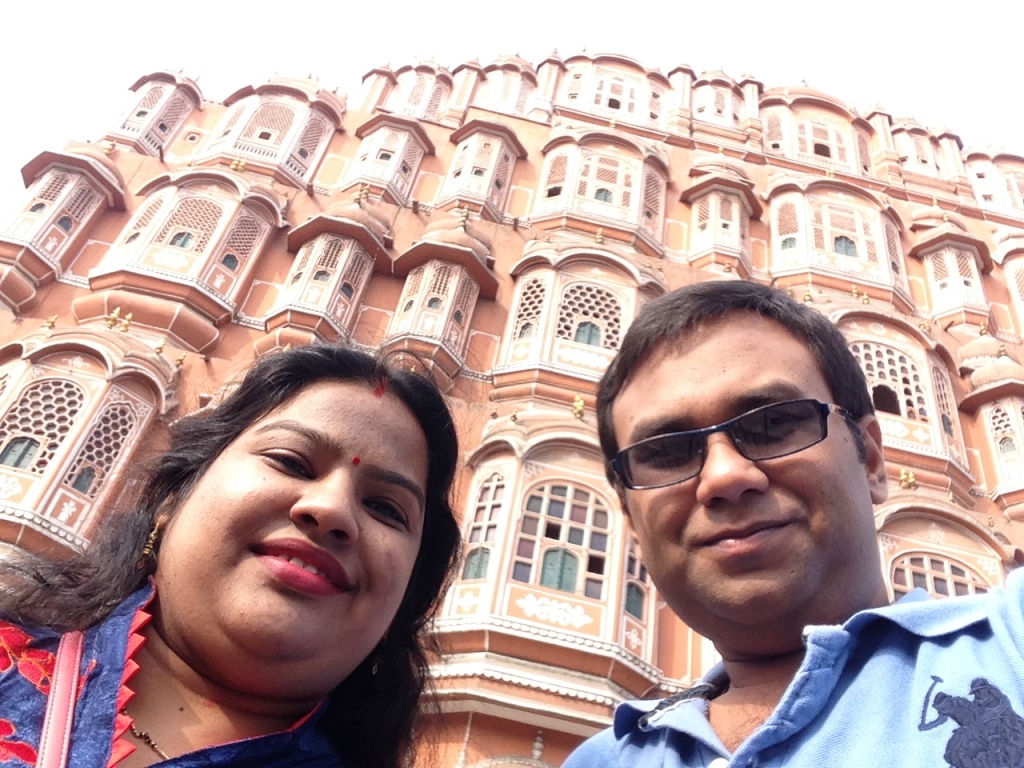


9 replies on “Inside Hawa Mahal, Jaipur – The most ornate Purdah”
It’s beautiful. I have seen several times while I stayed at Kota . Nicely penned. Thank you.
LikeLiked by 1 person
Thank you for the kind words. Such words of encouragement motivates me to keep going.
LikeLike
Wow Rahul, what an eloborate yet interesting presentation of one of the miracle architecture of India. I am unfortunate enough that can’t vist it, due to some reason and just stared from city palace itself. Looking forward to more blogs from your pen.👍👍
LikeLiked by 1 person
Thanks Shiv. Do plan to visit the pink city again
LikeLike
Great article Rahul! Have been there, such a magnificent place! Ofcourse crowded with the traffic and shops.. So difficult to find that perfect angle for your picture 🙂 but nevertheless the history associated with it and the beautiful juttis ,I got from there definitely compensated it 😊
LikeLiked by 1 person
Yeah true. The traffic is maddening around that place. Glad you liked the post
LikeLike
Beutifully captured pics with intresting story line ..superb
LikeLike
Thank you
LikeLike
Nice article , please visit my blogCheap Gaming SmartphoneThe Best Lenovo Laptop
LikeLike